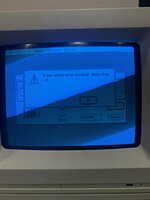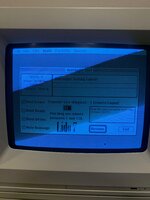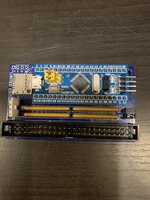rjkucia
Well-known member
Hi all, I posted this thread over on TinkerDifferent, and I was hoping to post here to get some more eyes on it.
tl;dr - As far as I can tell there was a bad stick of RAM which is now replaced, which helped a lot. However, I'm still having lots of errors with more advanced workflows and I'm starting to think it's SCSI related. Thanks in advance for any suggestions!
tl;dr - As far as I can tell there was a bad stick of RAM which is now replaced, which helped a lot. However, I'm still having lots of errors with more advanced workflows and I'm starting to think it's SCSI related. Thanks in advance for any suggestions!
I've replaced the memory, and I *think* that's helped things, but things are still weird. I was able to fully boot System 7 pretty consistently, even 7.5, along with playing some games that wouldn't run before. However, there's still a few instances of crashing, and oftentimes when I reboot, the image becomes unusable - sometimes I get to "Welcome to Macintosh", where it will then loop or blink, or sad Mac errors, or "Address Errors" or "Coprocessor not detected" errors. I also had several files that errored out when I copied a bunch of files from one BlueSCSI image to another. Additionally, depending on my configuration of BlueSCSI images, not all of the drives will show up on the desktop, even though the log says the devices were found, and utilities can usually see there's something on that SCSI ID (just not mounted).
This makes me think there might be some SCSI issues as well.
What's a good way of testing that? Are there other things I should be looking at? Could it be an issue with the BlueSCSI itself? Does anyone have a "known good" image that basically just has System 6 and whatever utilities would be good for testing this? Thanks!
Edit: Some other things - the errors tend to persist more with a soft-reboot vs cutting power and waiting a bit. I also tried the BlueSCSI on both the external and the internal SCSI port. Another common error message I've been seeing is "Stack Collision with Heap"



